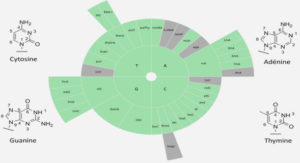THE IMPACT OF SOCIAL DIVISIONS ON VICTORIAN
WOME
Marriage: a subordinating Institution
Marriage, a legally and socially sanctioned union usually between a man and a woman that is regulated by laws, rules, customs, beliefs and attitudes that prescribes the rights and duties of the partners and accords status to their offspring( if any). The universality of marriage within different societies and cultures is attributed to the many basic social and personal functions for which it provides structure such as sexual gratification and regulation, division of labour between the two sexes, economic production and consumption, and satisfaction of personal needs for affection, status, and companionship. Perhaps its strongest function concerns procreation, the care of children and their education, and socialization, and regulation of lines of descent. Through the ages, marriage has taken a great number of forms. (Encyclopaedia Britannica). If we compare this signification of marriage with what it signified in Victorian England, we may see that it has undergone many transformations and changes which are very unfavourable to women. It has become a tool used by men to restrict women‟s rights, confine them and make them feel inferior in society. Being a Victorian woman meant being confined in home, deprived of your possessions, dependent to your husband, or always being in search of a better status from wealthy men. Marriage had made women submissive and obliged to satisfy men, to seek and being their “slaves”. Adriane Rich argues that: The ownership of human beings proliferates from primitive or arranged marriage through contractual marriage with dowry through more recent marriage (for love) but involving the economic dependency of the wife, through the feudal system, through slavery and serfdom. The powerful (mostly) make decision for the powerless: the well for the sick… 21 However the man may first have obtained power over the woman as mother, this power has become diffused through our society in terms of that first sexual enslavement. Each colonized people are defined by its conqueror as weak, feminine, incapable of self-governing, ignorant, uncultured, effete, and irrational in need of civilisation. In other words, they were expected to conform to male‟s needs and recommendations without thinking about their natural rights that they should possess as did men. It seems as if women had been indoctrinated since birth that they were inferior to men, unable to live their own lives as they thought it fit. Sweetness is to women what sugar is to fruit. It is her first business to be happy a sunbeam in the house making others happy. True, she will often have “a tear in her eye”, but like the bride of young Lochinvar, it must be accompanied with a “smile” on her lips”. Girls and women are willing enough to be agreeable to men if they do not happen to stand to them in the relation of father, brother, or husbands, but it is not every woman who remembers that her raison d’être is to give out pleasure to all as a fire gives out heat.22 However it was not all women who wanted to get married during this period, those of the upper place were already rich, so they did not need to depend on men to be happy. The meaning of marriage was modified by males using extended religious beliefs for their own personal need. Some revealed religions such as Islam and Christianism recommend a wife to be submissive, this does not mean that she must accept or have the fate of being enslaved as they were in Victorian England. Men have always regarded women as a sub class that exists to serve male needs, most notable in the realms of sexuality and reproduction, but also pieces of property to be passed (sold or given away from one man to another and as free or cheap labour both inside and outside of the home.) In occasion a wife rebelled, she was easily silenced either by being shamed or punished, or by the infliction of physical chastisement. 22 Hardy, E.J, “Manners Makyth Man,” Hathi Trust Digital Library,1887 22 Then, marriage became an oppressing and reducing institution in many cultures and societies, most notably in the Victorian society. They faced all kinds of violence and humiliation and were considered as mere instrument of sexual pleasure. Women were indoctrinated from birth that they were inferior to men and ought to depend on them, obey them and stop where men recommend them to stop. For instance a man had the right to sell his wife to another one, or exchange her; this meant that they were just considered as simple object that must be passed without considering their opinions, revolt, or human status. A woman in depression does not usually welcome sex. We can also assume that Ms Michalski accepted the violence of the institution of marriage which guarantee man his “conjugal rights” so that she cannot be considered the rapist of his wife, she did not wish to have sex at the cost of bearing children. She knew she had had enough children by the time the third was born. Once she had children at all, she was faced with the double violence of marital rape (a woman regarded as her husband’s physical property is a raped woman.)23 Over times, marriage became or was changed into an economic and political means used by men to create kinship bonds, control inheritance and create labour spheres. Victorian women had not the right to divorce no matter how hard their situation in marriage had been, they had to perform and hold their suffering in patience. Until 1857, legal full divorce was only possible by an extensive lengthy and public process of securing a private Act of parliament. This was generally preceded by obtaining a separation in Mensa ET Thoro (of bed and board) under ecclesiastical law as well as by an action for criminal conversation brought by the husband against his wife‟s lover. This was civil action for damages for the husband‟s loss of access to his wife‟s sexual and other services. Husbands had complete rights over any property that their wives had brought to the marriage. 23 Rich, Adrienne, Of Women Born Motherhood As Experience and Institution, Norton and Company, New York. London, 1986, PP264-265 23 They could compel unhappy wives to remain in the family home and continue to allow them sexual access, virtually irrespective of their own behaviour. As we know that in many societies and cultures the husbands are always considered or nominated as heads of the family, they are expected to be protector of their wives, supply them foods and nourish them. At a given time in Victorian England, the ideal husband should be the bread winner of his wife, the legal person who must rise to a better position in society. This implied that a wife must stay at home, and be occupied with domestic tasks and not caring about other problems out of hole. Even their works were mostly jobs that only took place around the home. This was a means to exclude them from the outside world, to avoid them discovering the external world and being aware of their lower position. According to those principles, a woman‟s most important duty was to take care of his husband , make him feel happy and make the house cosy so that this latter will not go on the street to see other women like prostitutes for instance. As a result women manage to break the oestrus cycle and to better their chances of survival offer sex more selectively to those men who would provide them with more nutritious foods (especially meat) and safety.24 The word subordination itself implies the fact that there is someone who is or considered as inferior to another, or someone who is dependent on another. It also has a connotation of reduction, restriction and exploitation. Thus, these facts may be expressed in various means or through various social and daily relationships. As we had underlined it above, many men focused their argument on religious beliefs to justify the subordination of women through marital union. Some people contended that God could not be mistaken when he created man first and woman afterwards. In other words, if God created Adam first and 24 Williams, Chris, A Companion to Nineteenth Century Britain, Blackwell Publishing, London, 2004, P264 24 then Adam, it is because man was superior or better to woman. From this point of view, we can understand that women‟s situation is due to their physical appearance, their physical weakness when compared to men‟s physical features. However women‟s subordination rose very controversial debates and pushed some people in believing that they were divinely created to be superior leaders and trying to classify women on the same rank would be going against God‟s will, others believed that subordination was the worst form of slavery that had ever existed in society. Women‟s subordinating during the Victorian Era can be explained by the fact that they were excluded from all well-paying jobs, all important positions, may it be social, political, religious and economic. In other words, they were refused the right of working to gain their life in dignity. To solve this lack, they were obliged to submit themselves to ensure their survival and escape from misery and poverty once married, and they will conform to the rules established and to be respected by married women. Barred by Laws and customs from entering trade and professions by which they could support themselves and restricted from the possessions of property, women had only one means of livelihood, that of marriage.25 Thus marriage was a path that women were obliged to follow in order to satisfy their desires and needs. The Victorian period was a rigid one full of ideals that should be followed if one would like to be a respectable wife. Those rigid ideals implied chastity, virginity, innocence, and freedom from any relationship based on love or sexuality and obedience, and men were independent of all these conditions. Then the Victorian Era marriage was far from being a love based relationship.
Patriarchy: An obstacle to women’s advancement
Many people define Patriarchy as a social system in which the male gender role as the primary authority over children and property. It implies the institution of male rule and privilege entails female subordination. For others, Patriarchy is a social organisation marked by the supremacy of the father in the clan of family, the legal dependence of wives and children, and the reckoning of descent and inheritance in male line broadly; a disproportionately share of power controlled by men. According to John Ruskin, the man‟s power is active, progressive, defensive. He is eminently the doer, the creator, the discoverer, the defender. His intellect is for speculation, and invention; his energy for adventure, for war, and for conquest…But the woman‟s power is for rule, not for battle-and her intellect is not for invention or creation, but for sweet ordering, arrangement, and decision…She must be enduringly, incorruptibly good; instinctively, infallibly wise-wise, not for self-development, but for self-renunciation: wise, not that she may set herself above her husband, that she may never fail from his side. The Harraps twentieth century dictionary defines Patriarchy as a social system in which a male is head of the family and descent is traced from the male line. All of those definitions share the same point of view regarding Patriarchy: a world where men dominate. Historically, the term Patriarchy was used to refer to autocratic rule by the male head of a family. But in modern times, it more generally refers to the social system in which power is primarily held by adult men. 27 Walby (1990, 20) has defined Patriarchy thus: I shall define Patriarchy as a system of social structures and practices in which men dominate, oppress and exploit women- the use of the term social structures is important here, since it clearly implies rejection both of biological determinism and the notion that every individual man is in a dominant position and every woman in a subordinate one…Patriarchy is composed of six structures: the patriarchal relations in paid work, patriarchal relations in State, male violence, patriarchal relations in sexuality and patriarchal relations in cultural institutions… These various forms of patriarchy mentioned above show that Patriarchy is almost present in all social relations. The patriarchal mode of production refers to the undervalued work of housewives who are producing class, while husbands are the expropriating class. Women were confined into the worse jobs and got low salaries: this is the patriarchal relations in paid work. The patriarchal relations in the state include the racist and capitalist attitude and it has bias towards patriarchal interests. Women undergo the male violence which is tolerated by the state‟s refusal to intervene against it. Patriarchy has also determined heterosexuality as the norm for women. Thus, patriarchy can be defined as the rule of men as heads of households over household economies and extended affairs (Barret 1998, 10). During many centuries, women have been kept subordinate to men and restricted so they could not fulfil some jobs than could ensure them a good life in independence and absolute freedom. In England under Queen Victoria women were confined to what is called “the private sphere” which limited their roles to domesticity and motherhood. This was the reason why they only occupied works in the home: governesses, housemaids, mistresses, servants… Men did not want to let them discover the world outside the home. Kate Millet also widely portrays the extent of male domination in patriarchal society when she argues that the military, industry, technology, universities, Science, 28 political offices, finance, in short every avenue of power within the society is entirely in male hands. This is to say that everything is under male control in a patriarchal society. During the Victorian Era, many were the women who were obliged to become prostitutes to gain liberty and escape from male violence and restrictions. There were many prostitutes during the Victorian Era. Most were lowerclass women, with the exception of the mistresses kept by upper class men. According to Victorian standards, respectable women did not consider sexual intercourse pleasurable. It was their duty to be intimate with their husbands. Men enjoyed prostitutes because they could not enjoy their wives. Victorian feminity was not defined by sexual pleasure while Victorian masculinity was defined by sexual pleasure and conquest.28 Even religion has a patriarchal view of the relationships between genders. Wives should be subject to their husbands as to the Lord…Christ is the Head of the church and saves the whole body, so is a husband the head of his wife, and as the church is subject to Christ, so should wives be to their husbands, in everything. (Ephesians, 5:22, 25.) Many people use religious arguments to comfort the dominant male position. “God was declared male and man was declared to be created in his likeness. Eve became the symbol of temptation and sin. The woman was judged as a less likely candidate for salvation and an everlasting life in heaven than man. In the western culture, sexual inequality is based on the belief that women are biologically inferior to men. However, this is seen differently when we look at the Islamic view that is based on the belief that: the whole system is based on the assumption that woman is a powerful and dangerous being. All sexual institutions (polygamy), repudiation etc) can be considered as a strategy for constraining her power. In 28 Ucdavis.edu/water-sites/prostitution/bibliography.htm/Fallen, 2015, visited on 15th October 29 Islamic societies, women seem to be forced into certain roles and responsibilities. These restrictions often seem to elevate a man‟s importance and status in society while degrading a woman‟s status. While Koran and Islamic society state that the two sexes are equal in religious and legal aspects, the two sexes have very different roles within the society. Those roles and responsibilities push women down and create an unjust standard of living between the sexes. Patriarchy is a phenomenon that is visible in the field of work. The distribution of roles is based on gender. In many societies, some works are strictly reserved for men while others are strictly reserved to women. The traditional gender division of labour would like that women stay at home and take care of their children or of their husbands.
Acknowledgement |





